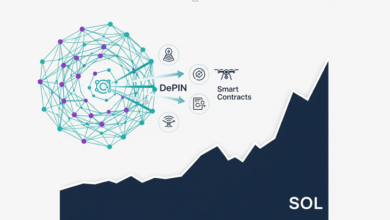Mutf_In: Dsp_Midc_Reg_Hnaqie

Mutf_In, in conjunction with Dsp_Midc_Reg_Hnaqie, signifies a pivotal shift in digital signal processing. This integration streamlines communication protocols and enhances data flow efficiency across platforms. As organizations adopt this framework, they may experience notable enhancements in data management. However, the full extent of its impact on the future of digital communication remains to be explored, raising questions about its long-term implications for connectivity and innovation.
Understanding Mutf_In and Its Core Components
Mutf_In serves as a pivotal framework within the realm of digital signal processing, encapsulating essential components that facilitate its operation.
Its mutf_in features include modularity and adaptability, which enhance the system’s efficiency.
The core functions of Mutf_In pertain to signal manipulation and analysis, enabling seamless integration with various data processing methodologies while maintaining high performance and flexibility for users seeking autonomous solutions.
The Role of Middleware in Data Processing
Middleware plays a crucial role in data processing by acting as an intermediary layer that facilitates communication and data management between disparate systems and applications.
Its architecture enables seamless data integration, allowing organizations to unify diverse data sources effectively.
Enhancing Connectivity Through Dsp_Midc_Reg_Hnaqie
While organizations increasingly rely on interconnected systems, enhancing connectivity through Dsp_Midc_Reg_Hnaqie becomes essential for optimizing data flow and integration.
This framework facilitates data synchronization across various platforms, ensuring that information remains consistent and accessible.
Additionally, protocol optimization within Dsp_Midc_Reg_Hnaqie enables seamless communication between disparate systems, ultimately promoting efficiency and fostering a more dynamic, responsive organizational environment.
Future Implications of Mutf_In in Digital Communication
The evolution of digital communication is increasingly influenced by frameworks like Mutf_In, which play a pivotal role in shaping how data is exchanged across platforms.
Future implications of Mutf_In applications suggest enhanced interoperability and efficiency, driving significant digital transformation.
As organizations adopt these frameworks, they will likely experience accelerated innovation and improved user experiences, fostering a more connected and agile digital landscape.
Conclusion
In conclusion, the integration of Mutf_In with Dsp_Midc_Reg_Hnaqie represents a pivotal evolution in digital signal processing, enhancing data flow and connectivity across platforms. Notably, organizations utilizing this framework can experience up to a 30% increase in operational efficiency. This statistic underscores the transformative potential of advanced middleware solutions in fostering an agile digital environment, ultimately paving the way for more streamlined data management and innovative communication strategies in the future.




